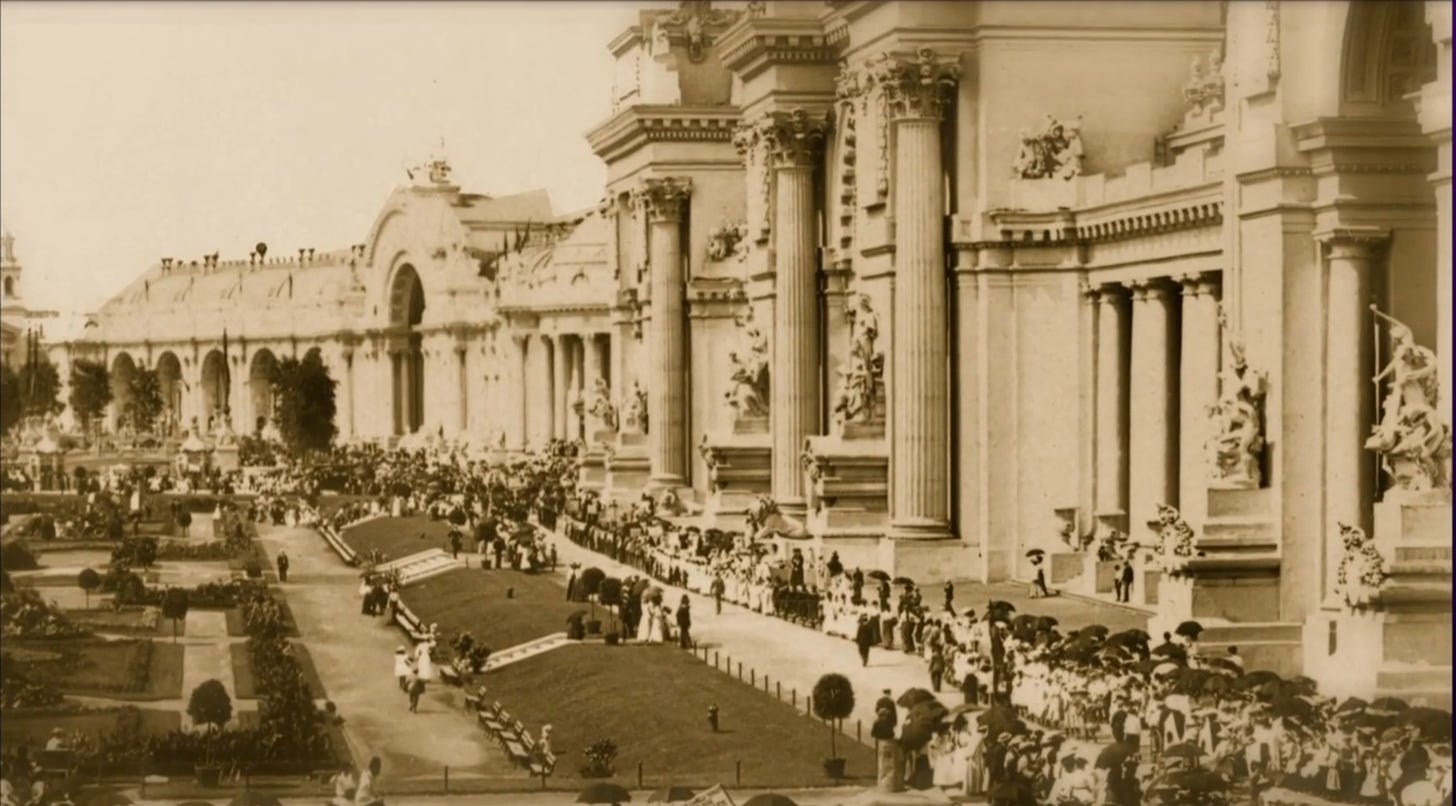It’s hard to remember today just how big a deal a World’s Fair used to be. Nowdays, of course, we can pull out our phones and talk to people from all over the world at the drop of a hat, we can find out about new technology at the drop of a hat, we can imagine ourselves in any locale at the drop of a hat just by watching someone else go there.
Basically, everything people used to go to a World’s Fair for, we can harness via a device that’s roughly the size of a filet mignon.
This does not, however, make past World’s Fairs any less impressive, and one of the most famous is the 1904 Louisiana Purchase Exposition. It’s been immortalized before, namely in the 1944 film, Meet Me In St. Louis, but the 2004 documentary, The World’s Greatest Fair takes an even deeper look.
This excellent documentary is a good mix of both the lighter side of the fair and the political side. World’s Fairs were not only a way to showcase the latest technologies and culture, but to show off cities. St. Louis wanted to show itself off. Chicago had done it, and St. Louis didn’t want to be left out. The main adjective used to describe the 1904 Fair is “overwhelming,” which gets old although it’s extremely apt.
There’s quite a bit about the Ferris wheel that came to St. Louis from Chicago and was so popular people had their weddings on it, with one couple on horseback and another standing on a platform above a car. The ride even had a snack bar. Unfortunately, though, once the fair was over no one could afford to keep the Ferris wheel so it was dynamited, with the whereabouts of its colossal axle still unknown.
It also goes into the immense detail and care that went into planning the fair, and even just the buildings are impressive. Most of them were made of wood and a special kind of plaster, but they looked like something brought over from Paris. They’re incredibly detailed and textured, so much so that it’s a shame the Palace of Fine Arts is one of the few buildings remaining.
Equally impressive were the number of attractions people could take in for the fifty-cent admission. There was a world showcase similar to Disney’s EPCOT today, only the World’s Fair imported pygmies from Africa and a Filipino tribe, the Igarots, to come live on the grounds in a recreated village. The latter scandalized the locals when it became known that they liked eating dog meat, a stereotype today’s Igorots are still trying to shake.
The film does a great job of presenting the political and cultural atmosphere of 1904, detailing everything from the ways people got to the fair to the many different rides beside the Ferris wheel (“Over and Under the Sea” looks especially intriguing.).
However, it doesn’t shy away from the cruel racism that went on, such as the rather shameful display of pygmy Ota Benga in the monkey cage, billing him as a cannibal. What’s interesting is that the fair administration staff made a point to welcome black Americans to the fair, and the horse races even featured an excellent black trainer named Tom Bass. Although he had to deal with segregation and other mistreatment off the field, Bass’s work spoke for itself.
There’s also a certain amount of mythbusting that goes on towards the end. It’s said that ice cream cones and iced tea were both invented at the 1904 fair, but the reality isn’t quite that simple.
And anyway, it doesn’t matter. The fair offered a dizzying array of sights to see and things to do, and it seemed like a last gasp of sedateness and quiet before the madcap years of the twentieth century set in. There are so many reasons why this fair still intrigues us almost a century and a quarter later. I feel like one viewing of The World’s Greatest Fair isn’t enough to take everything in.
The World’s Greatest Fair is available to stream on Amazon Prime and Tubi. Not rated.
My grade: A-
Principal Cast: John David (narrator), Francis Slay, Ozzie Smith
Written by Mike Ketcher and Jim Kirchherr.
Directed by Scott Huegerich and Bob Miano.




